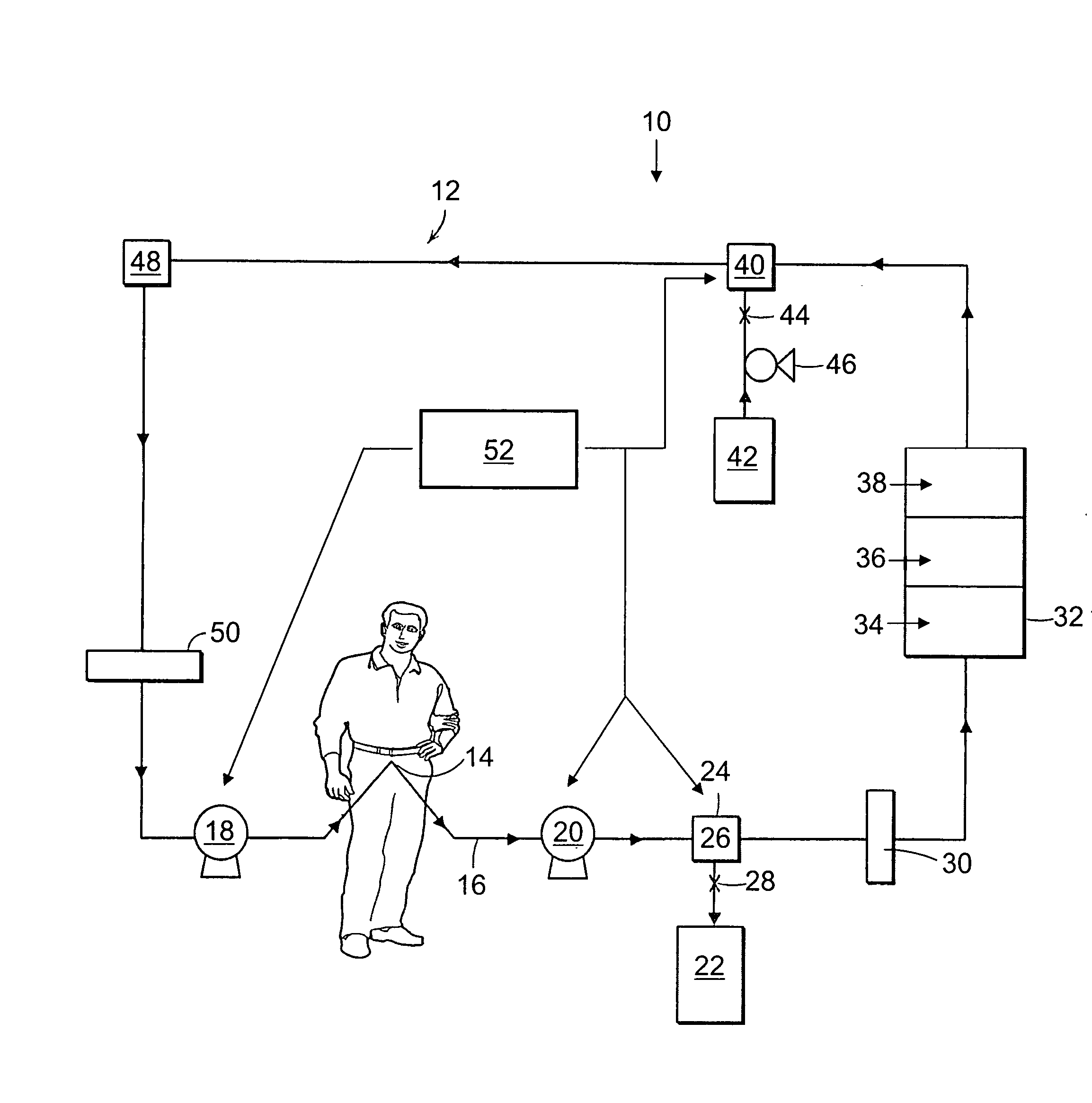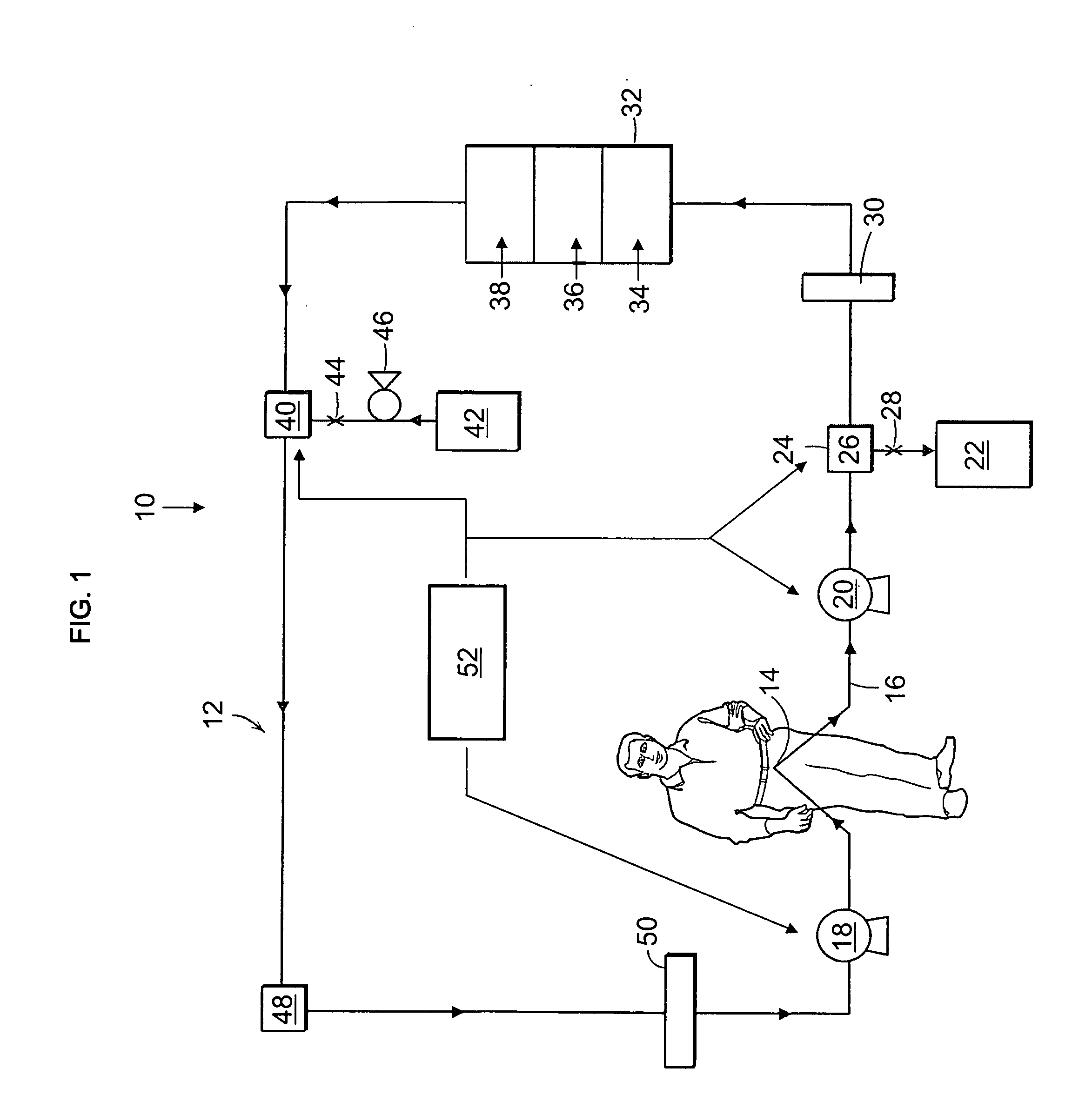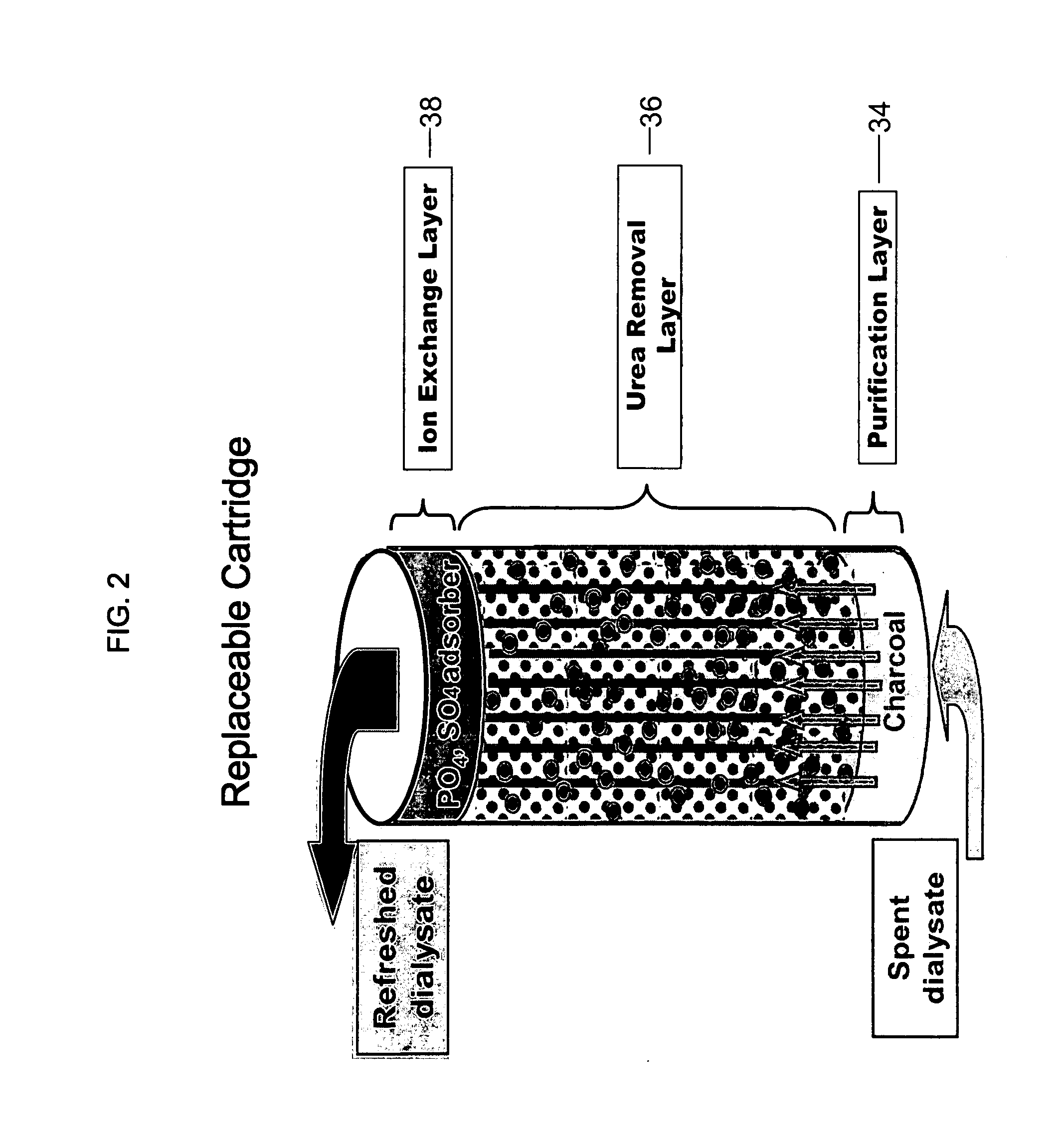Wearable kidney
- Summary
- Abstract
- Description
- Claims
- Application Information
AI Technical Summary
Benefits of technology
Problems solved by technology
Method used
Image
Examples
Embodiment Construction
[0022] The present invention generally relates to a continuous, wearable peritoneal dialysis system that removes uremic waste metabolites from a patient suffering from, a disorder associated with the accumulation of uremic toxins (e.g., chronic kidney failure). The system can be used to treat a disorder like, for example, renal disease, including early renal disease, renal dysfunction or renal failure (e.g., end stage renal disease). As used herein, the term “uremic waste metabolites” refers to compounds, such as those containing nitrogen, produced by the body as waste products and includes compounds like urea, uric acid, creatinine and β2-microglobulin. Renal failure or dysfunction leads to uremic toxicity which occurs when the levels of uremic waste metabolites in a patient are elevated compared to the levels of the toxins in individuals with normal renal function.
[0023] Thus, the present invention relates to a wearable peritoneal dialysis system that, unlike previous systems and...
PUM
 Login to View More
Login to View More Abstract
Description
Claims
Application Information
 Login to View More
Login to View More - Generate Ideas
- Intellectual Property
- Life Sciences
- Materials
- Tech Scout
- Unparalleled Data Quality
- Higher Quality Content
- 60% Fewer Hallucinations
Browse by: Latest US Patents, China's latest patents, Technical Efficacy Thesaurus, Application Domain, Technology Topic, Popular Technical Reports.
© 2025 PatSnap. All rights reserved.Legal|Privacy policy|Modern Slavery Act Transparency Statement|Sitemap|About US| Contact US: help@patsnap.com



